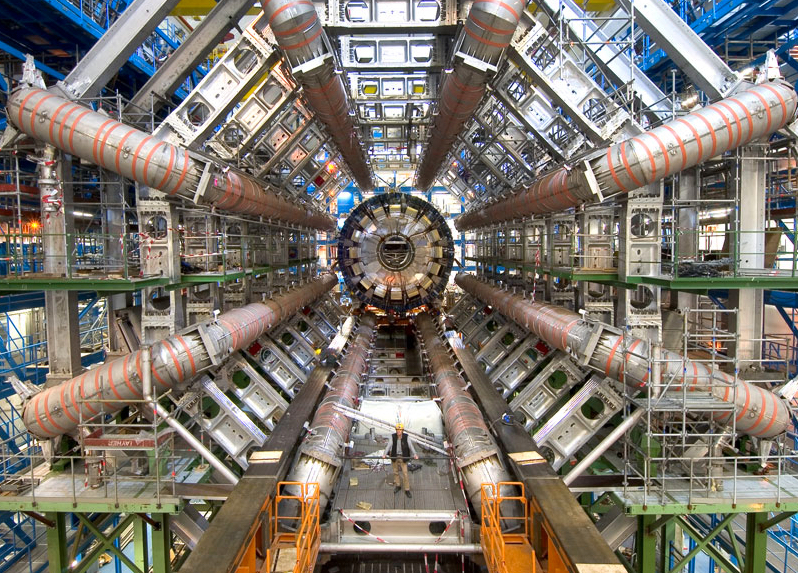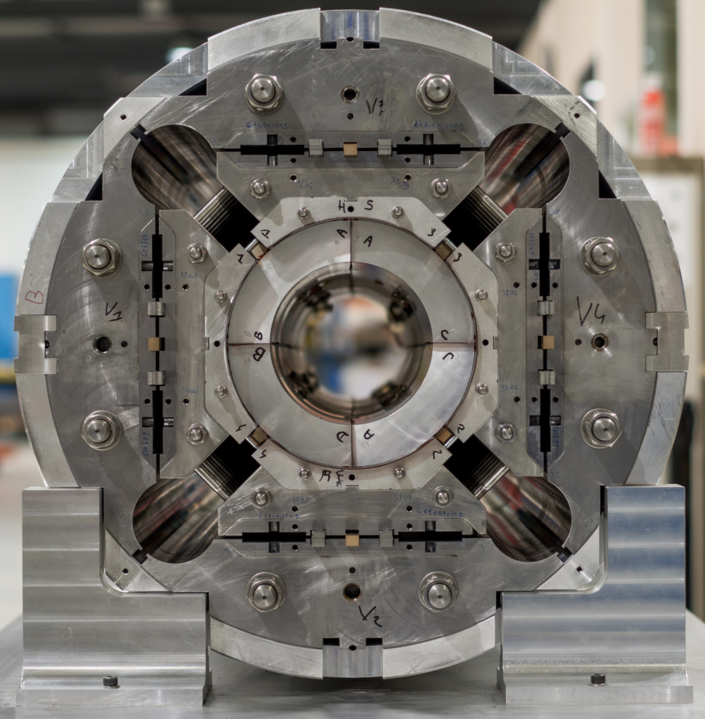China plans world’s largest supercollider
November 2, 2015

China’s Circular Electron Positron Collider (CEPC) is expected to be at least twice the size of the world’s current leading collider, the Large Hadron Collider at CERN, partially shown here (credit: Maximilien Brice/CERN)
Chinese scientists are completing plans for the Circular Electron Positron Collider (CEPC), a supergiant particle collider. With a circumference of 80 kilometers (50 miles) when built, it will be at least twice the size of the world’s current leading collider, the Large Hadron Collider at CERN, outside Geneva, according to the Institute of High Energy Physics in Beijing. Work on the collider is expect to start in 2020.
The collider complex is initially designed to smash together electrons and their anti-matter counterparts, and later more massive protons, at velocities approaching the speed of light. This process hopes to recreate, inside the accelerator, the hyper-energy conditions that dominated following the Big Bang.
Physicists aim to explore the origins of matter, energy, and space-time. China says its collider will ultimately be able to reach higher energy levels than CERN; this might help physicists discover a new range of particles beyond those already charted in the Standard Model of Particle Physics.
According to Professor Nima Arkani-Hamed, a scholar at Princeton’s Institute for Advanced Study, a perfect circle-shaped city, hosting the globe’s leaders in experimental particle physics, new-technology firms and other future-oriented scholars and designers, could be created inside the massive Chinese collider complex. The complex would also host a multipurpose science-technology campus aimed at conducting secondary and supplemental science experiments.
Within the same 80km tunnel, the collider complex plans to be divided between two different super colliders. The Circular Electron Positron Collider (CEPC) is designed to study the Higgs boson and how it decays following a collision between electrons and anti-electrons. The Super Proton Proton Collider (SPPC) will be used to study the super-speed collisions of protons.

New quadrupole magnets, which focus particle beams before collisions, are one of the key technologies for the High-Luminosity LHC. (credit: CERN)
Last week, more than 230 scientists and engineers from around the world met at CERN to discuss the High-Luminosity LHC — a major upgrade to the Large Hadron Collider (LHC) that “will increase its discovery potential from 2025,” according to the CERN website.